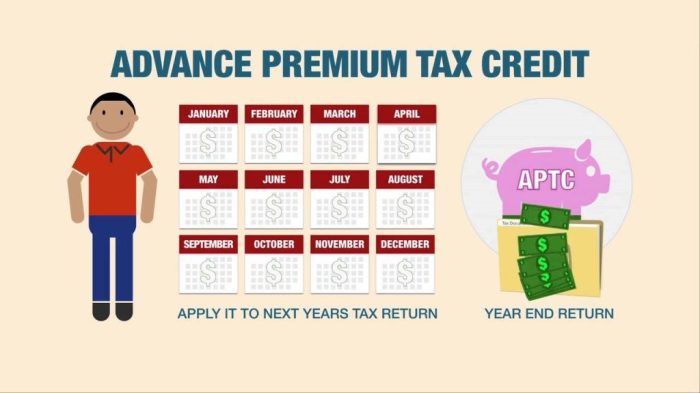Navigating the complexities of health insurance and taxes can feel like deciphering a secret code. Understanding how your health insurance premiums impact your tax liability is crucial for maximizing your financial well-being. This guide unravels the intricacies of tax deductions, credits, and the role of HSAs, empowering you to make informed decisions about your healthcare and financial planning.
From the deductibility of premiums for self-employed individuals to the tax advantages of Health Savings Accounts (HSAs), we’ll explore various strategies to minimize your tax burden related to healthcare costs. We’ll also delve into the nuances of state and local tax implications, ensuring a comprehensive understanding of this often-overlooked aspect of personal finance.
Tax Deductibility of Health Insurance Premiums
Understanding the tax deductibility of health insurance premiums can significantly impact your tax liability. The rules surrounding these deductions vary depending on your employment status and the type of health insurance plan you have. This section clarifies the different scenarios and provides examples to illustrate the potential tax savings.
Deductibility for Self-Employed Individuals
Self-employed individuals can deduct the cost of health insurance premiums as an above-the-line deduction. This means the deduction is taken before calculating adjusted gross income (AGI), potentially resulting in greater tax savings compared to itemized deductions. To claim this deduction, you must be self-employed, have paid premiums for health insurance coverage for yourself, your spouse, and/or your dependents, and not be eligible to participate in an employer-sponsored health plan.
Deductibility for Employees
Employees generally cannot deduct health insurance premiums if their employer offers a health plan. This is because the premiums are often paid directly by the employer or through pre-tax payroll deductions. However, there are exceptions. For example, if an employee is paying for a health plan that supplements an employer-provided plan (covering expenses not covered by the employer’s plan), a portion of these premiums might be deductible, depending on specific circumstances and applicable regulations. Furthermore, if an employee is uninsured due to their employer not offering a health plan, they might be able to deduct premiums paid under certain circumstances, though this is less common.
Comparison of Deductions: Self-Employed vs. Employed
The key difference lies in the method of deduction. Self-employed individuals deduct premiums above the line, reducing their gross income directly. Employees, in most cases, have no deduction for premiums paid through employer-sponsored plans. This results in significantly greater tax benefits for the self-employed, as the deduction reduces taxable income more substantially. Consider two individuals: one self-employed earning $60,000 annually and paying $10,000 in premiums, and another employed earning $60,000 with employer-provided health insurance. The self-employed individual can deduct the full $10,000, while the employed individual generally cannot deduct any premiums.
Required Forms and Documentation
To claim the deduction for health insurance premiums, self-employed individuals need to file Schedule C (Profit or Loss from Business) and Form 1040. They must keep accurate records of premium payments, including invoices, receipts, and bank statements. For employees claiming a deduction for supplemental insurance, they may need to provide documentation from their employer regarding their plan coverage and any supplemental coverage purchased.
Hypothetical Scenario Illustrating Tax Savings
Let’s assume Sarah is self-employed and earns $70,000 annually. Her health insurance premiums total $8,000. Without the deduction, her taxable income would be $70,000. However, with the deduction, her taxable income is reduced to $62,000 ($70,000 – $8,000). Assuming a marginal tax rate of 22%, the tax savings would be $1,760 ($8,000 x 0.22). This demonstrates the substantial financial benefit of claiming the health insurance premium deduction. Note that this is a simplified example, and actual tax savings will vary depending on individual circumstances and tax rates.
Impact of Health Insurance Premiums on Taxable Income

High health insurance premiums can significantly impact your overall tax liability. Because premiums are often deductible, they reduce your adjusted gross income (AGI), ultimately lowering the amount of tax you owe. Understanding how this works can lead to considerable tax savings.
The deduction for health insurance premiums is generally available for self-employed individuals and those not covered by an employer-sponsored plan. The amount you can deduct is the actual amount you paid in premiums during the tax year. This deduction is taken above the line, meaning it’s subtracted from your gross income before arriving at your adjusted gross income (AGI). A lower AGI can push you into a lower tax bracket, resulting in lower tax liability.
Taxable Income Calculation After Premium Deductions
Calculating your taxable income after considering premium deductions involves a straightforward process. First, determine your gross income – this includes all your earnings from various sources. Then, subtract your allowable health insurance premium deductions from your gross income. The resulting figure is your adjusted gross income (AGI). Finally, apply your applicable tax rate to your AGI to determine your tax liability. This is a simplified explanation, and specific circumstances might necessitate additional considerations. For example, itemized deductions may further reduce your taxable income.
Step-by-Step Guide to Calculating Tax Savings
Let’s illustrate this with a step-by-step example. Suppose an individual has a gross income of $60,000 and paid $5,000 in health insurance premiums. Their AGI will be $55,000 ($60,000 – $5,000). To determine the tax savings, we need to compare their tax liability with and without the deduction. This requires knowing the applicable tax brackets and rates.
For simplicity, let’s assume a simplified tax system with two brackets: 10% for income up to $40,000 and 20% for income above $40,000. Without the deduction, the tax liability would be calculated as follows:
Tax on first $40,000: $40,000 * 0.10 = $4,000
Tax on remaining $20,000: $20,000 * 0.20 = $4,000
Total Tax Liability: $4,000 + $4,000 = $8,000
With the deduction, the tax liability is calculated on the AGI of $55,000:
Tax on first $40,000: $40,000 * 0.10 = $4,000
Tax on remaining $15,000: $15,000 * 0.20 = $3,000
Total Tax Liability: $4,000 + $3,000 = $7,000
Therefore, the tax savings due to the premium deduction is $1,000 ($8,000 – $7,000).
Tax Savings Comparison Across Income Brackets
The following table demonstrates the potential tax savings for different income levels and premium amounts, using a simplified tax system for illustrative purposes. Actual tax savings will vary based on individual circumstances and the applicable tax laws and brackets.
| Gross Income | Premium Amount | AGI | Estimated Tax Savings (Simplified Example) |
|---|---|---|---|
| $45,000 | $3,000 | $42,000 | $300 |
| $60,000 | $5,000 | $55,000 | $1,000 |
| $80,000 | $7,000 | $73,000 | $1,400 |
| $100,000 | $10,000 | $90,000 | $2,000 |
Tax Credits and Subsidies Related to Health Insurance
Many individuals and families find the cost of health insurance to be a significant burden. Fortunately, various tax credits and subsidies are available to help offset these expenses, making health coverage more accessible. Understanding these programs and how they interact with premium deductions is crucial for maximizing tax benefits.
Eligibility for tax credits and subsidies is primarily determined by income, household size, and the availability of affordable health insurance options through the Marketplace (often referred to as the Health Insurance Marketplace or exchange). These programs aim to ensure that individuals and families can afford the coverage they need. The interaction between these credits and subsidies and premium deductions can be complex, and it’s often advisable to consult a tax professional for personalized guidance.
Eligibility Criteria for Tax Credits and Subsidies
Tax credits and subsidies are designed to help individuals and families afford health insurance. Eligibility is based on several factors, including income, household size, and the cost of health insurance plans available in the individual’s area. Income must generally fall within specific thresholds, with higher income levels leading to smaller or no subsidies. The size of the subsidy is directly related to the cost of the “benchmark” plan available in your area and your income. The lower your income, the larger your subsidy will likely be. For example, a family of four earning $60,000 annually might qualify for a substantial subsidy, while a family earning $150,000 might not qualify for any.
Interaction Between Credits, Subsidies, and Premium Deductions
Tax credits and subsidies directly reduce the cost of health insurance premiums. They are applied before any out-of-pocket payments are made. In some cases, a premium tax credit can reduce the monthly premium to $0. While you may not be able to deduct the premium payments directly from your taxable income, the subsidies effectively lower the amount you have to pay, resulting in a reduced overall tax burden. For example, a $500 monthly premium could be reduced to $100 after a subsidy is applied. The remaining $100 would then be your responsibility. This interaction is a key aspect of the Affordable Care Act (ACA).
Applying for and Claiming Tax Benefits
Applying for tax credits and subsidies usually involves enrolling in a health insurance plan through the Health Insurance Marketplace. During the enrollment process, you’ll provide information about your income and household size. The Marketplace will then calculate your eligibility for any available credits or subsidies. This information is often automatically reported to the IRS, simplifying the tax filing process. However, it’s important to review your tax information carefully to ensure accuracy. You will generally receive a Form 1095-A from the Marketplace, which reports information about your coverage. This form is essential for claiming the premium tax credit when filing your taxes.
Types of Tax Credits and Subsidies
The availability of specific credits and subsidies can vary based on location and individual circumstances. However, the following are common examples:
- Premium Tax Credit (PTC): This is a refundable tax credit that helps lower the cost of monthly premiums for health insurance purchased through the Marketplace.
- Cost-Sharing Reductions (CSRs): These reduce out-of-pocket costs like deductibles, copayments, and coinsurance for individuals with lower incomes who purchase silver plans through the Marketplace.
- Advanced Premium Tax Credits (APTC): These credits are paid directly to the insurance company to reduce your monthly premiums. You receive this credit in advance and reconcile any difference at tax time.
State and Local Tax Implications of Health Insurance Premiums

The deductibility and taxability of health insurance premiums are not solely determined at the federal level; significant variations exist across states and localities. These differences stem from individual state tax codes and can substantially impact the overall cost of health insurance for individuals and families. Understanding these variations is crucial for accurate financial planning.
State and local tax laws concerning health insurance premiums are complex and often depend on the type of insurance plan (e.g., employer-sponsored, individual market), the individual’s income level, and the specific state’s tax structure. While the federal government offers tax credits and subsidies to help offset the cost of health insurance, state-level regulations can either enhance or diminish these benefits. For example, some states may offer additional tax credits or deductions specifically for health insurance premiums, while others may impose taxes on certain types of health insurance benefits.
State-Level Tax Deductions for Health Insurance Premiums
Several states allow taxpayers to deduct a portion or all of their health insurance premiums from their state income tax. These deductions can significantly reduce an individual’s state tax liability, effectively lowering the overall cost of health insurance. The specifics of these deductions vary widely; some states may only allow deductions for self-employed individuals or those who purchase insurance through the individual marketplace, while others might have broader eligibility criteria. For instance, California allows certain self-employed individuals to deduct health insurance premiums, offering a potential state tax savings. Conversely, states without such deductions leave taxpayers to shoulder the full cost. The availability of these deductions often changes with state legislation and budgetary priorities.
State Taxes on Health Insurance Benefits
Conversely, some states levy taxes on certain health insurance benefits. This might involve taxing employer-sponsored health insurance benefits as part of an employee’s taxable income or imposing taxes on specific types of health insurance payouts, such as those for long-term care. These taxes increase the effective cost of health insurance for the employee or beneficiary. For example, a state might tax the portion of a health insurance plan that covers dental or vision care. The absence or presence of these state taxes can make a significant difference in the net cost of health insurance for residents.
Examples of State and Local Tax Impacts on Health Insurance Costs
Consider two individuals, both with similar incomes and health insurance plans. One resides in a state that allows a significant deduction for health insurance premiums, while the other lives in a state with no such deduction and taxes certain health insurance benefits. The individual in the state with the deduction will likely experience a lower overall cost of health insurance due to the reduction in state income tax, even if the premium itself is identical. The other individual will pay more, reflecting both the absence of a deduction and the presence of state taxes on benefits. This difference can amount to hundreds or even thousands of dollars annually, highlighting the importance of understanding state-level tax implications.
Visual Representation of Tax Savings from Premiums
Understanding the relationship between income, health insurance premiums, and resulting tax savings can be challenging. A clear visual representation, such as a chart, can significantly improve comprehension. This section describes a chart designed to illustrate these complex interactions.
A three-dimensional bar chart would effectively display the relationship between income level, premium amount, and tax savings. The x-axis would represent different income brackets (e.g., $30,000, $50,000, $75,000, $100,000, $150,000 annually). The y-axis would represent the annual health insurance premium amount (e.g., $2,000, $4,000, $6,000, $8,000, $10,000). The z-axis would represent the resulting tax savings, calculated based on the applicable tax bracket and the deductibility of premiums.
Chart Data and Interpretation
Each bar in the chart would represent a specific combination of income and premium amount. The height of each bar would visually represent the amount of tax savings generated by that combination. For example, a bar representing an income of $50,000 and a premium of $4,000 might be significantly shorter than a bar representing an income of $150,000 and a premium of $8,000, reflecting the higher tax savings at the higher income level due to higher tax brackets. The chart would clearly show that higher income levels generally result in greater tax savings from health insurance premiums, even with higher premium amounts. Data points would be clearly labeled, and a legend would explain the axes and their units. A key takeaway would be the demonstrable benefit of tax deductibility for individuals in higher tax brackets, showcasing how the tax savings increase non-linearly with both income and premium cost. The chart would also highlight the potential for minimal tax savings at lower income levels, where the tax rate is lower. This visual representation allows for a quick and easy understanding of the financial implications of health insurance premiums across different income strata.
Conclusive Thoughts

Successfully navigating the intersection of health insurance and taxes requires a strategic approach. By understanding the various deductions, credits, and account options available, you can significantly reduce your tax liability and optimize your healthcare spending. Remember to consult with a qualified tax professional for personalized advice tailored to your specific circumstances. Proactive planning empowers you to control your financial future and secure your healthcare needs.
Key Questions Answered
Can I deduct health insurance premiums even if I’m not self-employed?
Generally, if you are employed and your employer provides health insurance, you cannot deduct the premiums. However, if you are eligible for the premium tax credit, this may indirectly reduce your tax liability.
What if I overcontribute to my HSA?
Overcontributing to an HSA can result in penalties. It’s essential to stay within the annual contribution limits set by the IRS.
Are there penalties for withdrawing from an HSA before age 65 for non-medical expenses?
Yes, withdrawing funds from an HSA for non-qualified medical expenses before age 65 will generally result in income tax and a 20% penalty.
How do I prove my health insurance premium payments for tax purposes?
Retain your insurance statements, payment receipts, and Form 1095-B (if applicable) as proof of payment and coverage.
What forms do I need to file to claim health insurance premium deductions?
The primary form used to claim deductions is Form 1040, Schedule 1 (Additional Income and Adjustments to Income). Specific schedules or forms may also be required depending on your situation (e.g., self-employment taxes).